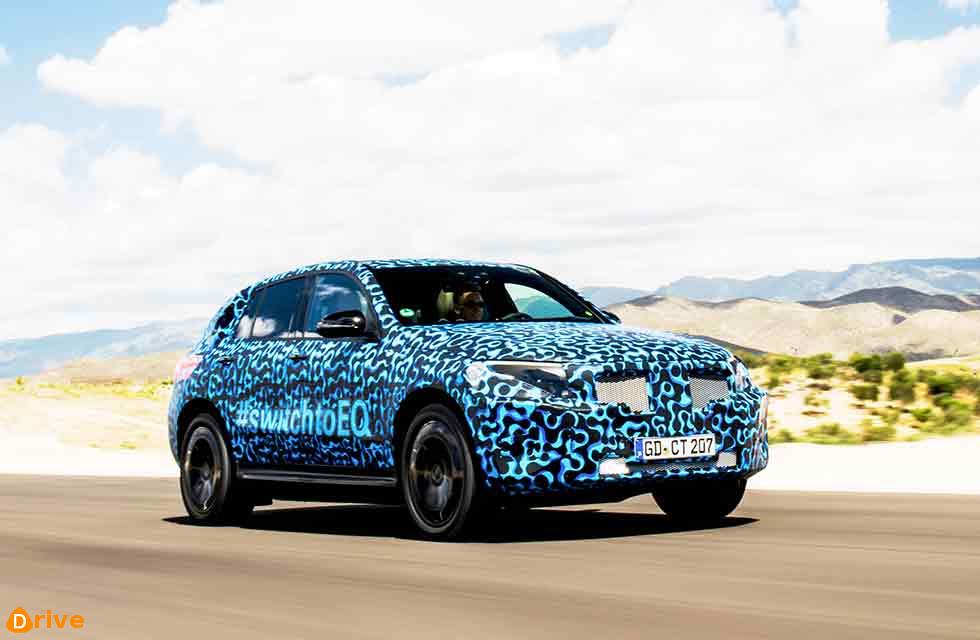The EQC will be the first Mercedes-Benz all-electric production model. But although its powertrain and technology might be new, designers had to ensure it retained the spirit of the brand. Words: Kyle Fortune.
Character building TECH INSIDER | MERCEDES-BENZ EQC
When the company that claims to have invented the automobile adds a new electrified brand to its portfolio, it’s a solid indication (if one were still needed) that the traditional automotive world is fully embracing electrification. Mercedes-Benz EQ was introduced to the world in 2016 at the Paris Motor Show, with the Generation EQ concept, and while EQ Boost mild hybridization is being used with the OEM’s newest combustion-engined vehicles, it’ll be 2019 before a fully plug-in EV is realized.

The vehicle in question will be the EQC, an SUV-proportioned car that will be very close to that 2016 Paris concept in its execution. Following the automotive zeitgeist for SUVs is sensible on two counts as it’s what buyers want, and their packaging suits an electric powertrain. Michael Keltz, Mercedes-Benz chief engineer, explains that the EQC is spun off the same platform as conventionally powered Mercedes-Benz models, enabling it to run down the same production lines. “When we have the marriage, it works much the same way as with a combustion engine, otherwise we couldn’t produce on the same line.”
The synchronous motors are mounted to suit, the front in a cage with auxiliaries attached, the rear fixed in line with the axle itself. Both are 150kW, although with differing power delivery – the front is tasked with being as economical as possible, with the rear focused more on performance. Driving all four wheels, or the front only for maximum economy, power for the motors comes from a battery that (although he won’t admit to specifics) Keltz does concede comes from parent company Daimler’s wholly owned subsidiary Deutsche Accumotive, is in excess of 70kWh, and accounts for around 25% of the EQC’s weight.
The vehicle’s range was originally quoted at 500km (310 miles), although under the more rigorous WLTP tests it’ll be less, Keltz says, during a test drive of one of the 190 Mercedes-Benz EQC prototypes that is undergoing testing before the 2019 launch.
Like any Mercedes-Benz, the EQC will see three summers and three winters as part of its development. The mechanical elements are at the off-tool stage now, with the core of the development focused on software, fine-tuning the drivetrain and the user experience inside via Mercedes-Benz’s MBUX infotainment system. Overall, the split between digital and real-world testing is around 35:65.
Retaining refinement
From an engineering perspective, Keltz admits to enjoying the challenge of developing a BEV, concentrating specifically on achieving the elements that define it as a Mercedes-Benz. Crucially, he explains, that means refinement. The team has worked at eliminating any electrical sounds and movements generated by the drivetrain. “We have the engine mounts isolated with rubber – they’re passive,” says Keltz, adding that the team has worked extensively to remove any sound paths and isolate any movement from the engine’s sizeable, and immediate, torque output.
Without an ICE to mask sounds, that refinement is even more crucial. There’s a domino effect, Keltz says, explaining that the sound of the compressor filling the standard air springs on the rear axle when the vehicle starts up needs to be addressed. That detail is key, with even the air vents designed to minimize any sound, as is the HVAC system that feeds them. Keltz relishes that challenge, though: “This is like if you lose weight and then you have to buy new jeans. It’s a nice problem to have.”
Integrating ideas
The EQC’s all-electric drivetrain also presents new ways of thinking, says Keltz. Micro management of torque on the motors can be exploited for ESP functionality, while the immediate reaction of the electric motors enables better transition from sailing (coasting) mode to driving at cruising speeds than you’d get with an ICE vehicle. “The guys that had done ESP systems up to now say, ‘I have a system that works; it’s only a different engine, so why change it? It works well.’ The guys doing the motor say, ‘I’m not in charge of the ESP, I want to be efficient and lightweight and so on.’ I have to get them together and say to them that things have changed, that there are areas you are now in charge of that you would have never imagined. You need to integrate the systems. It makes the whole story interesting.”
There remain challenges to be overcome. The vehicle charging infrastructure, for one, needs to catch up – although Mercedes-Benz’s CASE strategy, and its Ionity charging network joint venture with other OEMs should help to address this. With fast charging, the EQC should take a 50% charge in around 20 minutes, depending on the battery level and charger’s output. “What we do not want to make is a combustion car with an electric motor,” concludes Keltz. It’s clear, though, that it has to be a Mercedes-Benz.
The Mercedes-Benz EQC undergoing summer testing in Spain
“What we do not want to make is a combustion car with an electric motor” Michael Keltz, chief engineer, Mercedes-Benz
Despite the technological advances developed for the EQC, particular attention was also paid to retaining the Mercedes-Benz character.
Commonality between the EQC and conventionally powered Mercedes-Benz models will enable the all-electric vehicle to be produced on the same manufacturing lines.





